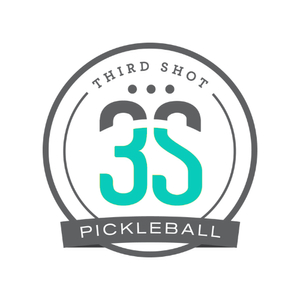Whether you're a novice or an intermediate player, these easy-to-implement strategies will provide you with immediate improvements on the court. If you're eager to take your pickleball skills to the next level without a steep learning curve, then you've come to the right place. We'll delve into key aspects such as shot selection, handling high balls, return of serve, positioning, and using easy angles when serving. Get ready to pick the low hanging fruit and witness a noticeable boost in your pickleball performance. Let's dive in and discover these simple and effective tips that you can apply right away.
Cross-court drops. Third shot drops are risky business. Hit the ball a little too hard or a little too high, and it gets attacked by the opponent — too low or too slow, and you’re in the net. One way you can lower your chance of failure is to think about the dimensions of the court.
When you play your drops down the line, you’re hitting over the highest part of the net. This carries a lot of risk. Additionally, the distance from where the ball crosses the net to the opponent is just 7 feet — even less when you consider their reach. But when you play your drop diagonally, you’re hitting over the lower part of the net, and the distance between where the ball crosses the net and the opponent is considerably longer. So do yourself a favor and hit your drops cross-court so you can work with a lower net and more room.
2. Diagonal dinks. As with drops, dinking cross-court makes a lot of sense. The lower net and longer distance to the opponent make it less likely they can intercept that ball when it’s high and attack. Another consideration — especially for more advanced players — is that when you hit your dink cross-court, you make it less likely your opponent can play an Erne. Unlike when you hit down the line, it will be much tougher for the opponent to step outside the sideline and hit your ball when you’re hitting diagonally.
Finally, cross-court dinks move the opponents more than down the line does. Just be careful not to hit so far cross-court that you open up the chance for them to go around the post.
3. In the dirt. One of the easiest ways to win more points is to be good at handling high balls. Most novice and intermediate players take those high balls and hit them hard at the opponents, usually around their midsection. While this can definitely win you points, it also increases the chance that they block your volley with their paddle as it sits up around their stomach or chest. Instead, when you get a high ball, think about putting it down into the ground. With the kids, we call it “putting the ball in the dirt.” You don’t even have to hit the ball that hard when doing this. Just make sure it’s on a downward trajectory, and your opponents will have a very tough time defending.
4. Stay away. A good return of serve can tilt the odds in your favor, and a poor one can spell big trouble. To increase the likelihood of hitting the return the way you want, give yourself more time to set up by standing farther back behind the baseline. Advanced players know that even a fraction of a second can be the difference between hitting a great shot or a horrible one. Give yourself as much time as possible by standing two or three feet behind the baseline.
5. Easy angles. The direction your ball travels is primarily controlled by the horizontal angle of the paddle at contact. But geometry also plays a role in determining where the ball ends up. When standing out wide, it is easier to serve out wide. And when standing near the center of the court, it’s easier to hit to the center of the court. This means you should consider your positioning when delivering the serve. If you tend to go out wide when serving from the left side because you want to expose your right-handed opponent’s backhand, it makes sense to typically stand out wide when you serve. And when serving from the right side, consider standing near the center of the baseline. This will make it easier to hit the serve to the "T," again getting it to the right-handed player's backhand.
And remember, just because you’re standing somewhere doesn’t mean you have to hit anywhere in particular. If your opponent starts catching on to what you’re doing, you can always adjust the angle of the paddle and hit in a different direction.
By applying these easy pickleball tips, you can quickly improve your game. Consider the court dimensions, opt for cross-court shots over down the lines (when hitting soft, at least), hit high balls with a downward trajectory, give yourself more setup time for returns, and use easy angles when starting the point. These low hanging fruit strategies are ready for you. So grab your paddle, apply these tips and watch your skills soar.







